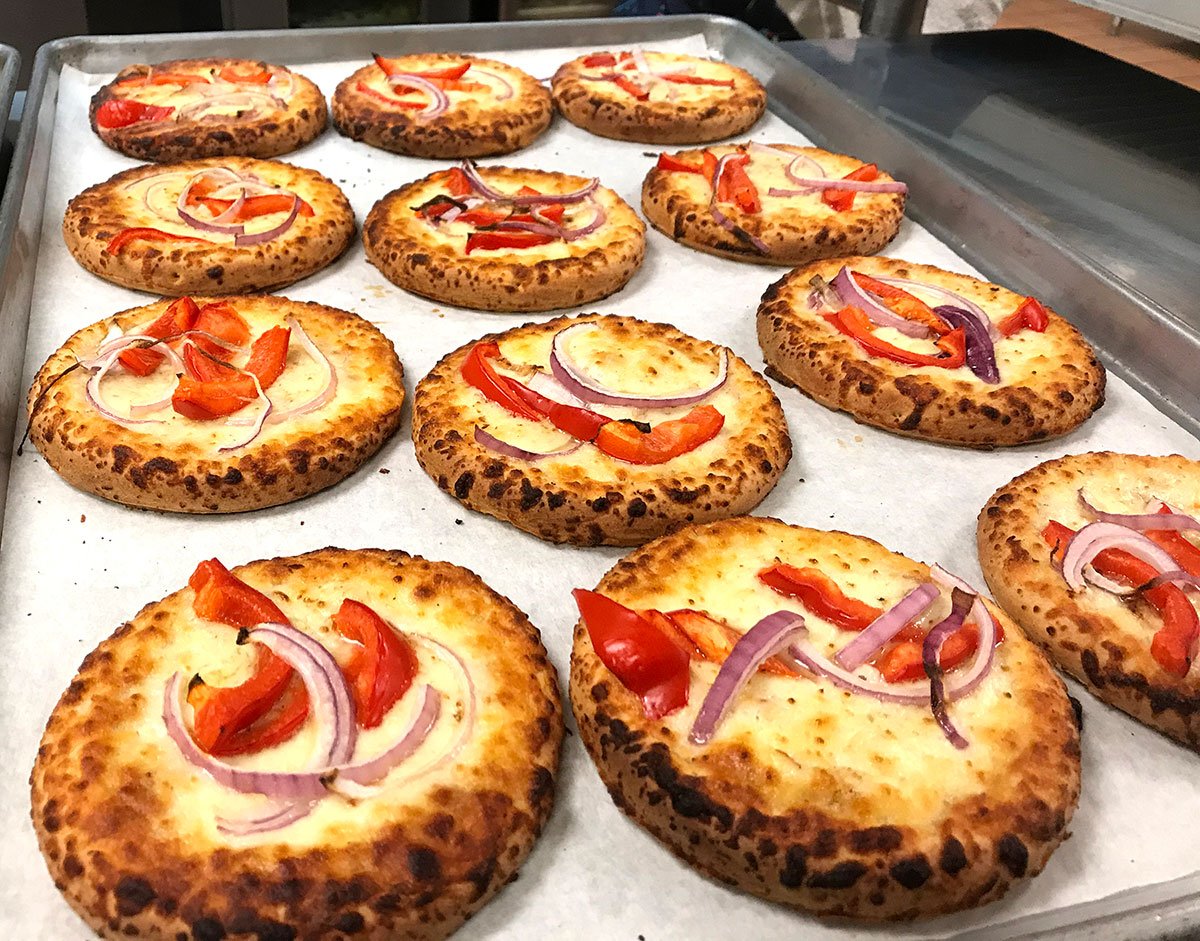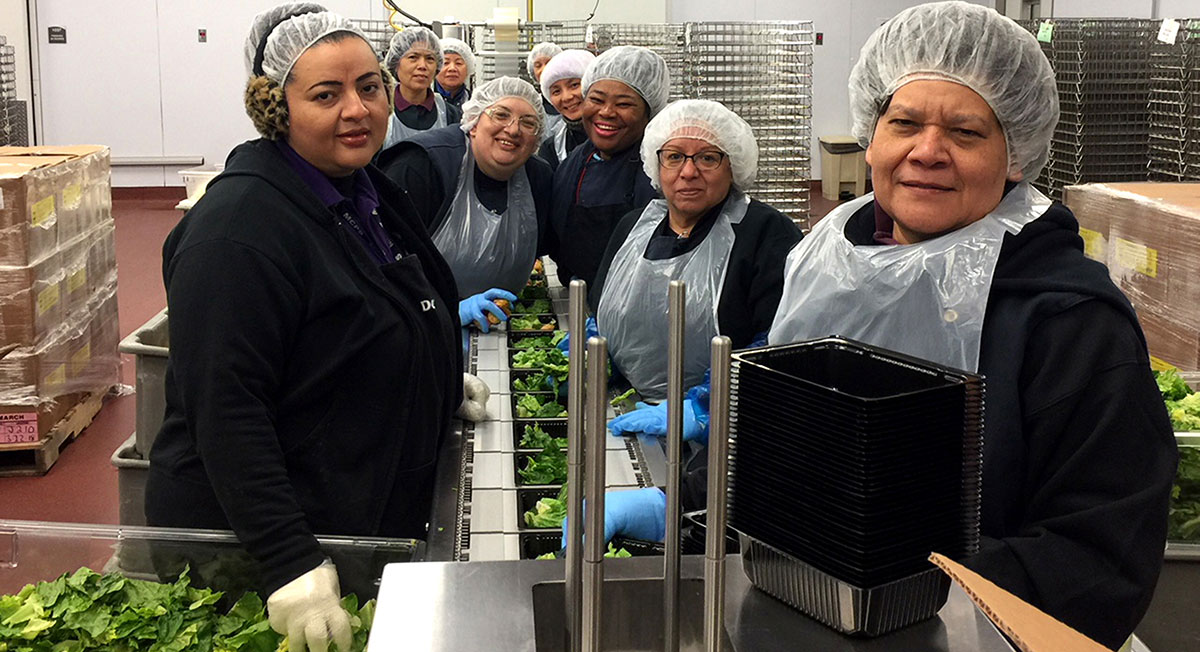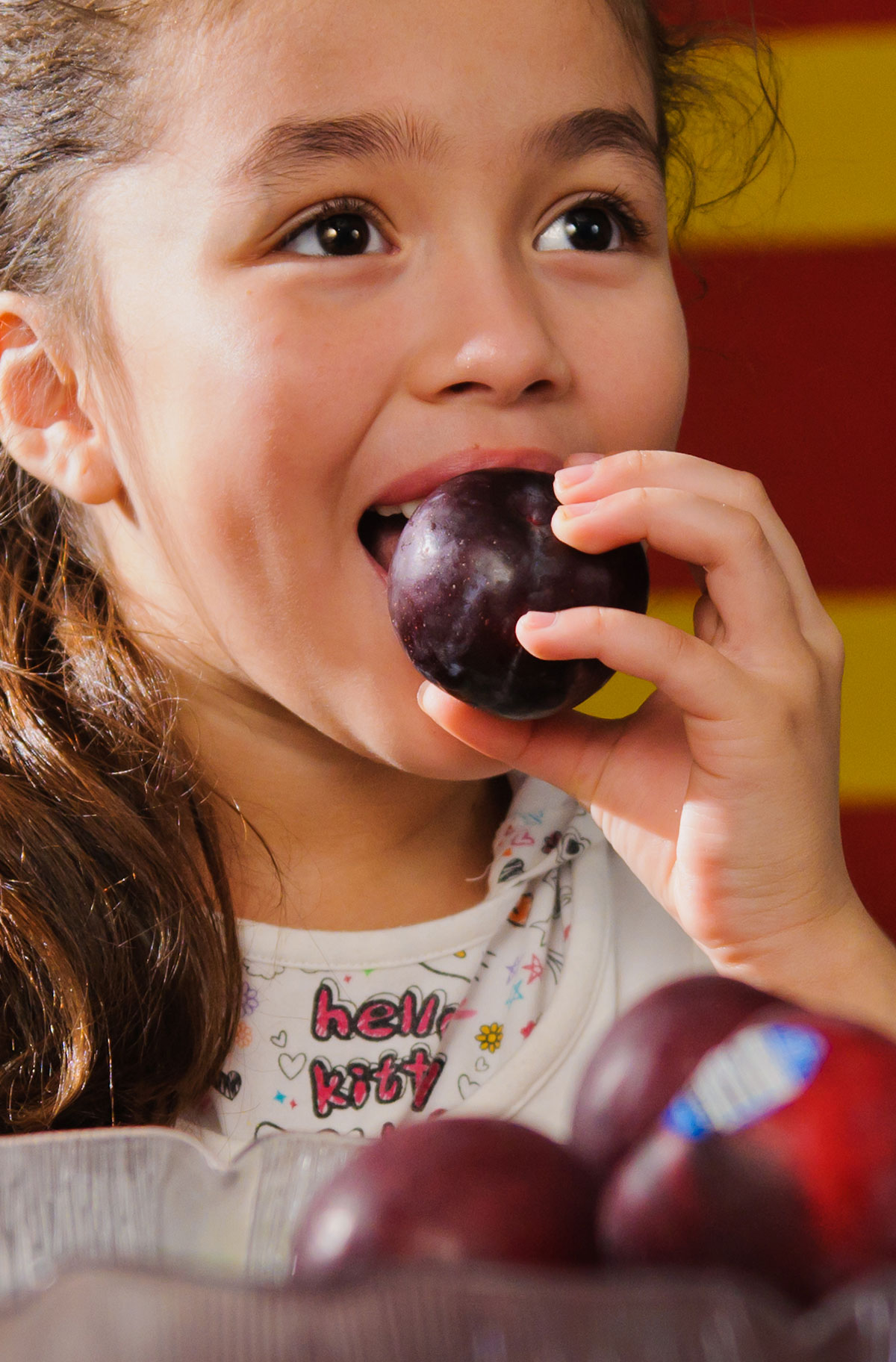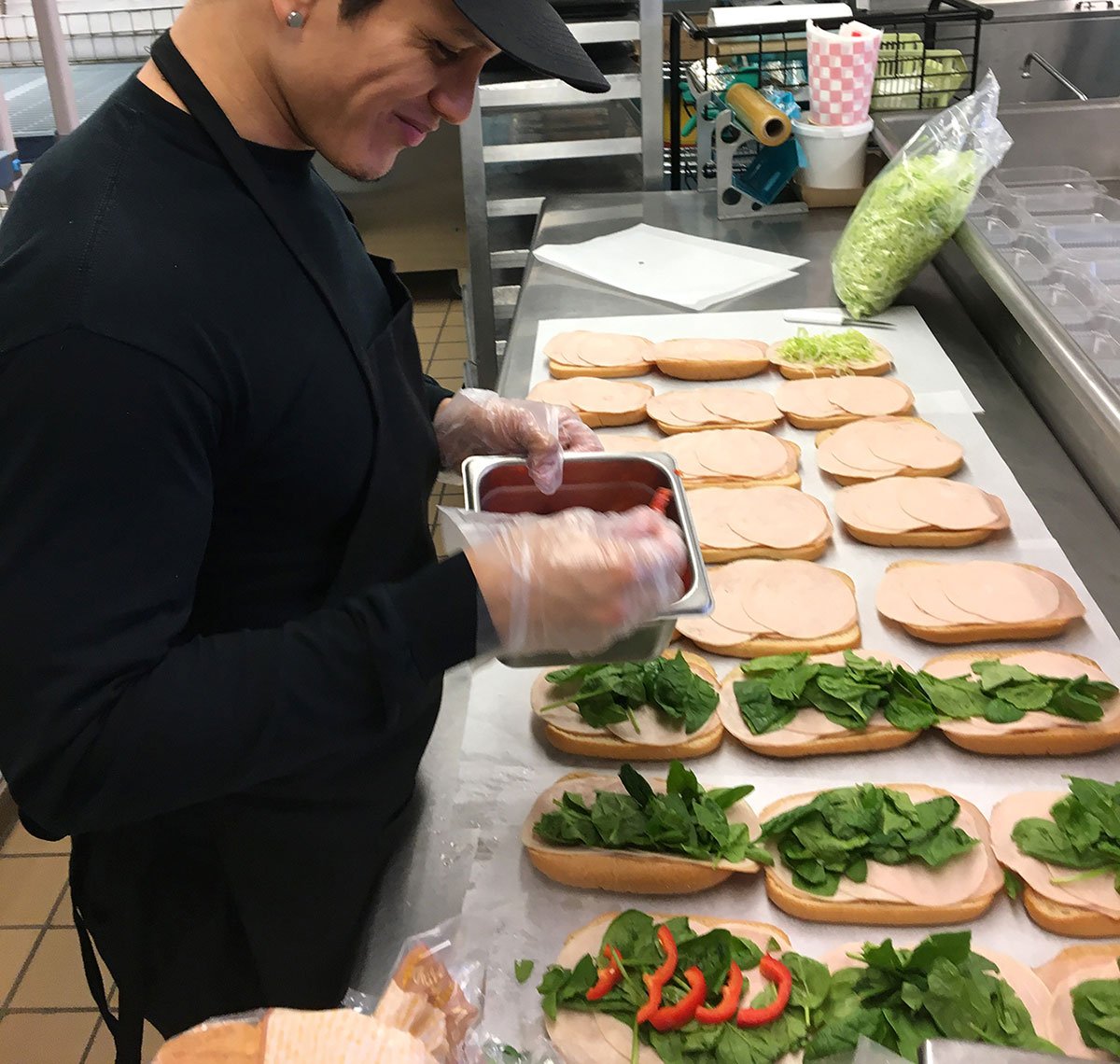About Us
The Department of Food and Nutrition Services (DFNS) provides a variety of appealing, high-quality, nutritious meals in a cost-effective, efficient operation. Dedicated employees, empowered to promote success for every student, serve meals in an innovative learning environment, respectful of each student's needs and differences.
Philosophy
DFNS is proud to be a vital link in the “Success for Every Student” mission of MCPS. Our philosophy is that appropriate combinations, balance, careful selections and preparation of individual food items play equally important roles in our menu-planning process. Menus and food specifications are based on the Dietary Guidelines for Americans, without depriving students of their favorite foods.
Menus
Our menus are planned by licensed, registered dietitians and analyzed by computer to ensure the maintenance of dietary goals, such as the 30 percent or less target for calories from fat over a week’s worth of menus. Purchased foods, recipe ingredients, and preparation techniques are reviewed carefully to ensure that our menus comply with nutritional guidelines.
However, the ultimate nutritional value is determined by the actual food consumed. Menus are presented as a balanced unit In the elementary schools, but not all items may be consumed. A variety of choices are available in the middle and high schools; and students are encouraged to learn how to choose wisely by selecting a balance of favorites with other offerings.
Summer Programs
Children 18 years old or younger may come to any of these locations Monday through Friday to receive a healthy and nutritious lunch.
No appointment is necessary; but the lunch must be eaten at the location.
Interested in receiving meals for your summer program?
The Summer Meals Program is designed to provide nutritious meals at no cost to children 18 years old and younger. Approximately 35% of MCPS students are eligible for free and reduced-price meals. This program is designed to bridge the “nutrition gap” when school is out.
The MCPS Department of Food and Nutrition Services is the summer food service sponsor in Montgomery County and about 9,500 children are served at approximately 120 locations each day.
Our goal is to provide meals to as many children as possible.
Does my program qualify for summer meals?
The program must be located in a school or at a location close to a school where 50% of the students enrolled are eligible for free or reduced-price meals. If the school is a middle or high school, the closest elementary school must have student enrollment with 50% free/reduced-price qualification.
If the program is not located in a school where student enrollment is 50% free/reduced-price qualified, the program may still qualify based on the actual list of enrollees.
The program needs to be supervised by a person responsible for ordering meals and insuring that food safety standards are met. The supervisor MUST be present during meal time.
If my program qualifies, how do I get started?
Contact the Department of Food and Nutrition Services at 240-740-7400.
You will be scheduled to attend a training and will learn how to order, store, and distribute meals.
What if I don't have a program, but I have a child and want him/her to receive summer meals?
Contact the Department of Food and Nutrition Services at 240-740-7400.
Maryland Meals for Achievement
 Maryland Meals for Achievement (MMFA), a research-based pilot program that provides a classroom breakfast to all students in the school, began in 1998 with six schools statewide.
Maryland Meals for Achievement (MMFA), a research-based pilot program that provides a classroom breakfast to all students in the school, began in 1998 with six schools statewide.
Harvard University researchers have evaluated the project’s impact on academics and behavior. They have determined that the classroom breakfast program has a positive impact on student achievement, and that classroom breakfast has a positive impact on students' Maryland School Assessment (MSA) test scores and grades. Researchers also credit classroom breakfast with improving student attendance by about two days per school year, decreasing tardiness and behavior problems, and increasing students’ attention span.
- School breakfast offers a wide variety of healthy foods, while meeting the United States Department of Agriculture (USDA) meal regulations. A school breakfast includes whole grains, protein and fruit or 100% fruit juice.
- Students look forward to a nutritious meal to start the day off right, making them healthier, happier, better behaved, and more productive throughout the day.
Montgomery County began MMFA in September 1999 at South Lake Elementary School, in Gaithersburg. The number has grown to 117 schools.
Maryland Farm-to-School Program
 "Farm-to-School" strives to bring locally produced foods into school cafeterias; participate in hands-on learning activities such as farm visits, host producers' visits to schools, school gardening; culinary classes; and integrate food-related education into the standards-based classroom curriculum.
"Farm-to-School" strives to bring locally produced foods into school cafeterias; participate in hands-on learning activities such as farm visits, host producers' visits to schools, school gardening; culinary classes; and integrate food-related education into the standards-based classroom curriculum.
Farm-to-school includes all types of producers and food businesses, including farmers and watermen as well as food processors, manufacturers, and distributors.
Maryland schools spent $18 million on local food served in schools, according a recent USDA Farm-to-School Census. Maryland was the first state in the nation to have every public-school system participate in the Maryland Homegrown School Lunch, an element of the Maryland Farm-to-School program.
Maryland has more than 2 million acres of farmland and more than 12,000 farms. More than 70 million lunches and 24 million breakfasts are served in Maryland schools annually.
In Maryland, Farm-to-School is not the federally funded Childhood Nutrition Programs. Locally sourced Maryland foods can be a part of the Breakfast, School Lunch, Fresh Fruit and Vegetable Program, Summer Meals, Maryland Meals for Achievement, and others.
 After-School Snack Program
After-School Snack Program
Purpose
To provide nutritious snacks for students up to the age of 18 who participate in supervised after-school programs. Good nutrition is essential to full physical and cognitive development and after-school snacks help children get the nutrition they need to learn, play, and grow.
Requirements
Schools eligible to participate in the After-School Snack Program must provide regularly scheduled educational or enrichment activities in a structured environment. Educational or enrichment activities may include arts and crafts, homework assistance, life skills, and computer or remedial education. Competitive sports are not eligible activities. However, after-school care programs that include a sports activity as part of their enrichment program may be eligible. The Food and Nutrition Services office can help you to determine if an activity qualifies for participation.
The Snacks
Snacks served in this program must meet the nutritional requirements of the United States Department of Agriculture. Each snack contains at least two items, including bagels with cream cheese and milk or orange juice; cheese and crackers with milk or orange juice; or baby carrots with dip, cookies, and milk.
In some locations, all students can receive the snack free because the site is located in the attendance area of a school in which at least 50% of the enrolled students are eligible for free and reduced-price meals. At locations that are not area eligible, students can receive meals based on each student’s meal status—free, reduced-price, or paid. Schools may have grant funding to cover the cost of the snacks so all students may eat at no cost.
How to Start and After-School Snack Program
Contact the Department of Food and Nutrition Services and ask to talk to the food service supervisor for the school where the snack program will be located. The food service supervisor will also share information on specific reporting and recordkeeping requirements to maintain program compliance. For more information, please call 240-740-7400.
 Outdoor Education
Outdoor Education
The Department of Food and Nutrition Services provides meal service—breakfast, lunch, dinner, and an evening snack—for the Lathrop E. Smith Environmental Education Center, which is owned and operated by Montgomery County Public Schools. Meals are planned to meet the extra requirements for outdoor activity. A salad bar is available at lunch and dinner. Entrees include students’ favorites, including omelets, french toast, spaghetti, and baked chicken.
Special dietary concerns may be addressed by calling the cafeteria manager at the Smith Center at 301-924-3123.
More information about environmental education and Montgomery County Public Schools can be found at www.mcps.k12.md.us/curriculum/outdoored/.
 Child-Nutrition Commodity Programs
Child-Nutrition Commodity Programs
WHAT ARE DONATED COMMODITIES? The United States Department of Agriculture (USDA) supports the National School Lunch Program and agricultural producers by providing schools with nutritious, USDA-purchased food (donated commodities). Donated commodities must be domestic in origin and a significant portion must have been determined to be in surplus at the time of the USDA purchase.
Over the past several years, donated commodities have contributed from $.15 - $.17 per lunch served. MCPS's Department of Food and Nutrition Services has received and utilized canned and fresh fruits, frozen and canned vegetables, ground beef and turkey, peanut butter, eggs, cornmeal, and flour.
Additional “bonus” purchases also significantly help offset the cost of providing lunches to students. The amount of bonus purchases varies from year to year. For example, for the 2004-05 school year, bonus orange juice led to a cost avoidance of over $500,000 for orange juice that did not have to be purchased.
Donated commodities vary from year to year, but include foods from categories of meats, fruits, vegetables, juices, eggs, grains, and nuts, and all contribute to the nutritional integrity of school lunches. USDA’s specifications for donated commodities change with ongoing scientific research relating to child nutrition—from canned fruits in heavy syrup to light syrup or juice-packed, lower- fat meats, and increased availability of fresh fruits and vegetables.